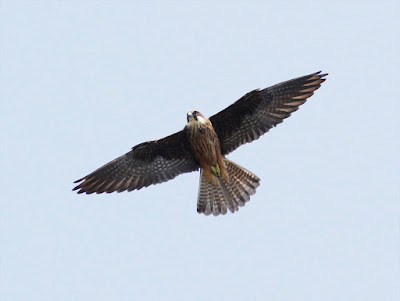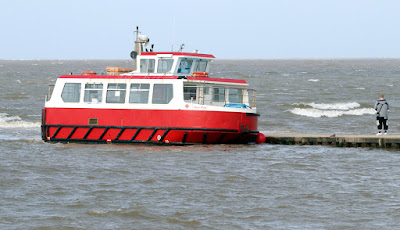How do birds navigate over long distances? This complex question has been the subject of debate and controversy among scientists for decades, with Earth's magnetic field and the birds’ own sense of smell among the factors said to play a part.
It’s a subject discussed previously on Another Bird Blog but here's an interesting update by way of scientific experiments on an island I know very well.
In new investigations researchers closely followed the movements and behaviour of 32 Scopoli's Shearwaters Calonectris diomedea off the coast of Menorca.
Scopoli's Shearwaters breed across the Mediterranean on Menorca, Ibiza, Formentera, Cabrera, Conillera and Dragonera. The majority of the population of Scopoli's Shearwater spend the non-breeding season in the Atlantic, including areas off the west coast of Africa and east coast of Brazil. They return to the Mediterranean in spring where they breed on rocky coasts and offshore islands, often close to or alongside Balearic Shearwaters Puffinus mauretanicus. Hence, I see both species of shearwater when I visit Menorca in early May each year and when both are clearly visible from the shore, numbers varying with the daily weather conditions.
Scopoli's Shearwater - Daniele Occhiatto
Menorca
Now, researchers from the universities of Oxford, Barcelona and Pisa have shown in a new experiment that the sense of smell (olfaction) is almost certainly a key factor in long-distance oceanic navigation, eliminating previous misgivings about this hypothesis.
For the experiment the birds were split into three groups: one made temporarily anosmic (unable to smell) through nasal irrigation with zinc sulphate; another carrying small magnets; and a control group. Miniature GPS loggers were attached to the birds as they nested and incubated eggs in crevices and caves on the rocky Menorcan coast. But rather than being displaced, they were then tracked as they engaged in natural foraging trips.
Study leader Oliver Padget, a doctoral candidate in Oxford University's Department of Zoology, said: "Navigation over the ocean is probably the extreme challenge for birds, given the long distances covered, the changing environment, and the lack of stable landmarks. Previous experiments have focused on the physical displacement of birds, combined with some form of sensory manipulation such as magnetic or olfactory deprivation. Evidence from these experiments has suggested that removing a bird's sense of smell impairs homing, whereas disruption of the magnetic sense has yielded inconclusive results"
"However, critics have questioned whether birds would behave in the same way had they not been artificially displaced, as well as arguing that rather than affecting a bird's ability to navigate, sensory deprivation may in fact impair a related function, such as its motivation to return home or its ability to forage. Our new study eliminates these objections, meaning it will be very difficult in future to argue that olfaction is not involved in long-distance oceanic navigation in birds."
All birds went out on foraging trips as normal, gained weight through successful foraging, and returned to exchange incubation periods with their partners. Thus, removing a bird's sense of smell does not appear to impair either its motivation to return home or its ability to forage effectively.
However, although the anosmic birds made successful trips to the Catalan coast and other distant foraging grounds, they showed significantly different orientation behaviour from the controls during the at-sea stage of their return journeys.
Scopoli's Shearwater - Martin Garner
Instead of being well-oriented towards home when they were out of sight of land, they embarked on curiously straight but poorly oriented flights across the ocean, as if following a compass bearing away from the foraging grounds without being able to update their position.
Their orientation then improved when approaching land, suggesting that birds must consult an olfactory map when out of sight of land but are subsequently able to find home using familiar landscape features.
Senior author Tim Guilford said: "To the best of our knowledge, this is the first study that follows free-ranging foraging trips in sensorily manipulated birds. The displacement experiment has rightly been at the heart of bird navigation studies and has produced powerful findings on what birds are able to do in the absence of information collected on their outward journey.
But by its nature, the displacement experiment cannot tell us what birds would do if they had the option of using outward-journey information, as they did in our study. This heralds a whole new era of work in which careful track analysis of free-ranging movements, with and without experimental interventions, can provide inferences about the underlying behavioural mechanisms of navigation. Precision on-board tracking technology and new analytical methods, too computationally heavy to have been possible in the past have made this feasible."
Story Source:
University of Oxford. "Sense of smell is key factor in bird navigation, new study shows." Science Daily, 29 August 2017.
Linking today to
Stewart's World Bird Wednesday.







































































.jpg)












